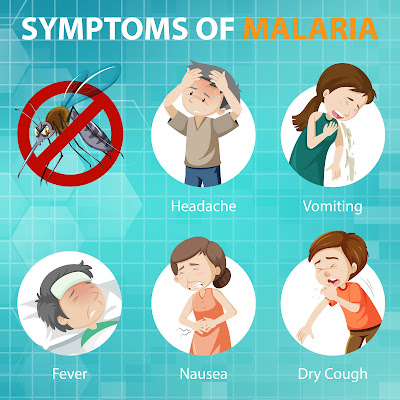Dengue Classification Guidelines | Dengue Fever
In November 2009, WHO released new guidance classifying symptomatic cases as dengue or severe dengue.
Dengue fever is defined as a combination of two or more clinical findings in a febrile person who has traveled to or resides in a dengue-endemic area. Clinical findings include nausea, vomiting, rash, pain, positive tourniquet test, leukopenia, and the following warning signs:
Abdominal pain or tenderness, persistent vomiting, fluid accumulation, mucosal bleeding, lethargy, agitation, enlarged liver. The presence of warning signs can predict severe dengue fever in patients.
Severe dengue is defined as dengue with any of the following symptoms:
Severe plasma leakage causing shock or fluid accumulation with shortness of breath; severe hemorrhage; severe organ damage, such as elevated transaminase >1,000 IU/L, impaired consciousness, or cardiac failure. From 1975 to 2009, according to WHO guidelines, symptomatic dengue virus infections were classified as dengue fever, dengue hemorrhagic fever (DHF), and dengue shock syndrome (the most serious form of DHF). The case definition follows reports that the DHF case definition is too difficult to apply in resource-constrained settings and too specific to represent a significant proportion of severe dengue cases, including cases of liver disease. , changed to the 2009 clinical classification. Identify disorders and encephalitis. The 2009 clinical classification has been criticized for being too broad, allowing for several different methods of diagnosing severe dengue fever and using non-specific warning signs as diagnostic criteria for dengue fever. Finally, the new guidelines fail to define clinical criteria (other than providing laboratory cut-off values for transaminase levels) for determining severe dengue fever, leaving the determination of severity to individual clinical judgment. It has been criticized for being
Febrile Period
Fever usually lasts 2 to 7 days and may be biphasic. Other signs and symptoms may include severe headaches. muscle, joint, and bone pain; macular or macular papular rash; and mild bleeding symptoms such as petechiae, ecchymosis, purpura, epistaxis, gum bleeding, hematuria, and positive tourniquet test results.
Some patients experienced oropharyngeal and facial flushing in the first 24-48 hours after initiation.
Warning Signal
Warning signs of progression to severe dengue appear in the late febrile period before or after resolution of fever, with persistent vomiting, severe abdominal pain, fluid retention, mucosal bleeding, dyspnea, lethargy/restlessness, orthostatic hypotension, and hepatic hypotension. Hypertrophy, progressive increase, etc. Hematocrit (ie, hemoconcentration).
Critical Period
The critical period of dengue begins with decerebrate and usually, it lasts 24-48 hours.
Most patients improve clinically at this stage, but patients with significant plasma leakage may develop severe dengue within hours as a result of significantly increased vascular permeability. Initially, physiological compensatory mechanisms provide adequate circulation and reduce pulse pressure as diastolic pressure increases.
Pleural effusion, ascites, hypoproteinemia, or hemoconcentration may occur in patients with severe plasma leakage.
Despite early signs of shock, the patient appears to be doing well. However, once hypotension develops, systolic blood pressure drops rapidly, and irreversible shock and death can occur despite resuscitation.
Patients may also develop severe bleeding symptoms, including hematemesis, hematochezia, or menorrhagia, especially if they experience prolonged shock. Rare manifestations include hepatitis, myocarditis, pancreatitis, and encephalitis.
Convalescence
As the plasma leakage subsides, the patient enters a recovery phase and begins to reabsorb extravasated intravenous fluid and pleural and ascites fluids.
As the patient's health improves, hemodynamic stabilization (although bradycardia may occur) and diuresis continue. A patient's hematocrit may stabilize or decrease due to the dilutive effect of reabsorbed fluid, and the white blood cell count usually begins to rise, followed by recovery of the platelet count.
The convalescent rash may be flaky and itchy.
Laboratory findings included leukopenia, thrombocytopenia, hyponatremia, increased aspartate aminotransferase, alanine aminotransferase, and normal erythrocyte sedimentation rate. dengue fever during pregnancy
Data on the health effects of dengue fever during pregnancy and the effects of maternal infection on the developing fetus are limited.
Perinatal infections can occur, and perinatal maternal infections may increase the likelihood of symptomatic infections in the newborn.
Of the 41 cases of perinatal infection reported in the literature, all developed thrombocytopenia, most cases had evidence of plasma leakage as evidenced by ascites or pleural effusion, and no fever was seen. was only his two cases. Nearly 40% had bleeding episodes and one in four had hypotension.
Newborns infected perinatally usually become ill in the first week of life. Maternal IgG to dengue placental infection (due to previous maternal infection) may increase the risk of severe dengue fever in infants infected between 6 and 12 months of age when the protective effects of these antibodies wear off. There is nature.








0 Comments